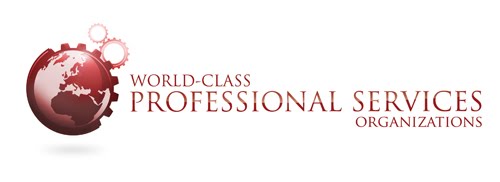Here, then, is a summary of some of the best suggestions that came across the PSVillage and Linked In Discussion Boards:
- Manage non-billable, client projects like a billable project by involving PS resources in the discovery and scoping discussions early and using the SOW and CR process to manage the agreement and work effort.
- Tracking non-billable work in a number of categories. For instance, one may consider tracking and reporting the percentage of PS time spent on:
- Non-billable commitments made by management (PS, Sales, and Executives)
- Project overruns due to missed estimates on fixed-bid projects
- Project Management approved no-cost CRs. - Charge back systems can be used to highlight the amount of non-billable work delivered (and on behalf of whom). For instance, if a sales manager commits to including five days of PS work at no additional cost in order to close a larger product deal, the Sales budget pays for the PS time. PS reports the booking and revenue like any other, but Sales takes a hit on its budget. In this model, Sales would be very aware of the value of the no-charge work and would understand the deal size that would need to be closed to make the PS work worthwhile.
- Financial Reporting can be used to highlight the amount of non-billable PS work delivered to customers. One member of the PSVillage worked directly with the head of finance to change the way non-billable PS work is reported on the company’s financial statements. With this change, the financial statements reported both the “Gross PS Revenue,” the discount rate for the period, and the Actual PS Revenue. Gross PS Revenue equaled all time spent by PS on client projects at the normal billing rate (whether billable or not). The discount rate represented the value of the lost revenue of the hours that were discounted or given away. The Actual PS revenue is the difference between the two. This type of reporting put a spotlight on the value of the no-charge PS work that was being delivered.
- A formal approval process ensures that all parties are aware of the need for and agrees to the no-charge work before the commitment is made to the customer. This approval should include the CFO, VP of PSO, and VP of Sales. The process should be well defined, and all parties in a position to give away PS work should be required to follow it. I would that approval should be required before any agreements on schedules and work effort are verbalized to the customer and should require an initial discovery by a qualified PS consultant or manager.
- VSOE, or Vendor Specific Object Evidence, is what determines how a business can recognize the revenue associated with a deliverable or work effort based on the fair market value of that work effort when sold as a stand-alone item. Some members of the Discussion Groups suggested that VSOE can be used as a baseline to which discounts are compared. Any discounts that bring the deal size below the VSOE would be flagged for review by finance before there is a contractual agreement between your company and your customer.
- Where the primary contributor to non-billable customer work is the Sales department (and assuming reps are paid a higher rate on product sales than PS sales), some suggested that the value of the discount come out of the license cost, in turn reducing the commission to the rep. it is thought that if the rep. feels the loss in his commission check, he will think twice about making the promise in the future. This often happens when VSOE is in place.
- In most cases, participants in the discussions felt that executive-level support and structuring the PSO as a profit center are the two primary drivers for reducing the pain associated with unmanaged “give away” commitments. With both in place PS managers can reduce the number and frequency of those commitments and ensuring that proper project management processes are followed in the pre- and post-sales efforts. Additionally, many thought that determining a budget for non-billable client work was important to ensure that these opportunities were scrutinized appropriately during the review and approval process.
Conclusion
PSO managers need to expect that non-billable work as a nature of the business in an embedded PSO. Getting agreement from the top with regard to how and when work will be given away is critical. Showing executive and sales management how unplanned, non-billable work - without PS involvement - disrupts the apple cart, including short-term and long-term effects, is critical. Solutions for managing non-billable work exist, but they work best when supported by the executives.
